EGO: First of all, I want to thank you for placing an ad on my blog. Could you please tell me why you think that this blog is good place for your advertisement?
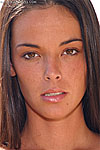
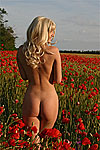
Bell: It seemed like a natural fit. Both EGO and Body in Mind are meant for objective thinkers and doers. As a thinker, I've made recent discoveries about the nature of female beauty that are every bit as profound and historic as Newton's discovery of gravity, and Freud's discovery of the sub-conscious. I think your readers are the best equipped men and women to understand these ideas, and bring them into the public arena.

Besides the philosophy, Body in Mind features galleries of female nudes. Because of this, many have mistaken us for a porn site, when we are not a porn site at all! In fact, we are about something totally new: pro-value nudes, or 'supernudes' as we call them, which are nudes not focused on sex, but on beauty. We needed a way to let the very men who would benefit most from our tasteful, value-oriented nudes discover them, and along came EGO, the first ones to see us for what we really are: tasteful nudes for intelligent men.
EGO: Please give us a short biographical sketch.
Bell: Sure. I'm a self-taught artist and philosopher who has been fascinated by female beauty since my earliest childhood, and have dedicated most of my life, art and thinking to that subject. At 25 I decided that art is putting what you like and love into an image. At 26 I discovered the definition of female beauty, which is: female beauty is the representation of values in a woman. For example, if you value life, reason, and happiness, you will find a serious, thinking, happy and purposeful woman beautiful. If you value only death and misery, you will find an androgynous, unhappy, unhealthy waif attractive. Whatever you value, you find attractive. In 1997 I created Body in Mind in order to celebrate images of the most beautiful women imaginable, imbuing them with every objective value I could – purpose, happiness, self-esteem, benevolence, intelligence, etc. In 2000 I invented a scale for measuring female beauty called the Bell Scale.

And in 2003, I invented beauty activism and brought it to the world on SuperBeauty.Org, in an attempt to show the world the connection I’d discovered between female beauty, morality, and politics.
EGO: When and how did you get interested in the beauty of the female body?
Bell: I've never been interested in the beauty of the female body. I've always loved women – the whole package, body and spirit. Since as far back as I can remember. However, to answer the intent of your question, I became interested in it when I realized that I could look at images of women in catalogs and men’s magazines for hours, not sexually, but spiritually, completely lost in thought. A single image of a girl with a nice tan in a white bathing suit, say like one in the Sports Illustrated Swimsuit Edition, would send me on a far-flung philosophical journey mentally for days. In my fervor I'd write poetry, draw pictures, take furious and copious notes, plaster my walls with my thoughts and drawings on paper. I realized there was a power in female beauty that no one had ever guessed. Judging from its effect on me, I concluded that rather than being shallow, it was incredibly deep, instead of corrupting men morally, it has the power to inspire moral behavior, thought, action, and the pursuit of values, and that as such, it was not likely to destroy the world, but might be able to save it.
EGO: Tell us what kind of camera equipment you are using. Describe the different steps of a photo shoot and the creation of a new gallery. How do you find the models? Who is the "girl next door"?
Bell: Initially, I created the photos myself using a traditional 35mm camera. I still dabble, but find I am too slow to create the number of galleries needed for a paid site like Body in Mind. Thus I depend on the photos of other photographers who share my vision of female beauty, at least in part. At first it was very hard to find images that suited our mission. No one but me was taking them. You can see some of my early photos in the "Summer" gallery on BiM.
I had to pick and choose 1 or 2 photos from several hundreds from any one photographer's portfolio. It was very slow going. But after a couple of years, we started getting more and more submissions from photographers taking the kinds of pictures we liked – beautiful, happy, pro-value pictures. The greatest, and most consistent, of these is Chris Ruegge. Chris himself is a happy, pro-value guy so it's easy to see where his pictures come from. In fact, we liked his work so much that we created our first Body in Mind spin-off, The Girl Next Door, which features Chris's work exclusively.
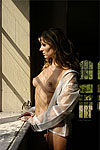
EGO: Which are your favorite sculptures? Please list some of your favorite artists.
Bell: My favorite sculptures and paintings are by Australian artist, Norman Lindsay. He sculpted and painted the most profoundly beautiful women I've ever seen in settings and poses that scream of admiration for the power of female beauty. Unfortunately, he sculpted many of them out of concrete, not marble, and they have been eaten away terribly by rain and wind. It's really tragic. Of course, Michelangelo's David is the single best sculpture ever created. I wish he'd done an ideal woman on as grand a scale.
I like Norman Rockwell's paintings, for the sunlit sense of life his paintings portray, and the almost infinite finesse with which he rendered stereotypical scenes interesting.
I suppose I am my own favorite artist, since I alone seem capable of creating images that inspire me and never lose their charm. I guess this is what makes me create images in the first place, what makes me an artist: I can't find ones I like anywhere, so I have to make them myself. Robert Tracy and Bryan Larsen are two exceptions, however. I believe they call themselves Romantic Realists. They both have work featured at the online Quent Cordair gallery.
Of course, as a novelist, Ayn Rand is a better painter than most painters, including me, the way she created unforgettable scenes which are burned into the brains of most of her fans, in spite of having never been rendered physically: Howard Roark on the rock cliff, Galt's Gulch, Dagny on the engine of the train.
EGO: Would you describe yourself as a romantic realist?
Bell: Yes, I suppose so. At least I value and try to represent the same thing they do: the pursuit of values on earth. I've always called myself an Idealist as far as art goes. Romanticism was a bona fide art movement. So was Realism. Putting the two words together I feel only increases the potential confusion caused by that term, and veers awkwardly from Ayn Rand's defining work, The Romantic Manifesto. Romanticism is enough. There is no need to tack 'Realism' on the end, unless it’s to distinguish it from Romantic Surrealism or something.
EGO: What's the mission with the SuperBeauty.org campaign? Do you have a vision statement as a guide?
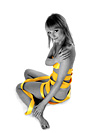
Bell: Our mission is to allow female beauty to save the world. The world is a mess. But it's the world without the free and moral influence of female beauty. Female beauty has been mystified and vilified for centuries, if not always. It's superficial, it's depraved, it's dangerous, it's destructive, it's deadly. If left unguarded it will destroy the world. We've all heard these things a thousand times. Yet in reality, female beauty is meant, by nature, to inspire men, which means to inspire the pursuit of objective values in rational men. It has always had this beneficial effect on thinking, valuing men and women. Those who claim otherwise hold the moral high-ground not because their theories are correct, in fact, none of them has ever been proven. They hold the high-ground - and women continue to be butchered and robbed of their rights around the world just for being beautiful – simply because those of us who revere female beauty are not brave enough to contradict them, even though the evidence is squarely on our side! SuperBeauty.Org is brave enough. I created the site as a focal point for those who believe female beauty is a moral influence on mankind, and that mankind deserves the benefit of this influence.

EGO: What's your view on Islam's role in the world and its treatment of women?
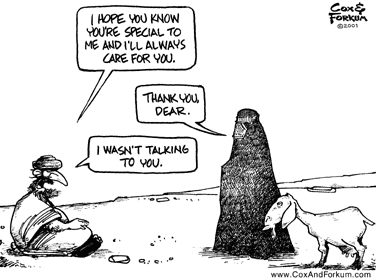
Bell: If you're talking about militant Islam its purpose is clear – to destroy all human values. Suicidal maniacs often like to kill as many innocent strangers as they can before they kill themselves. They want to die, and they want to take as many others with them as possible. Militant Islam is this same principle in action on the scale of an entire religious sect.
Notice how the first value they're always out to destroy is female beauty? It’s a sad truth that those who hate values see more clearly than do those who love it, that female beauty is the definitive representation of values.
EGO: Please say a bit more about the relation between the sense-of-life of the pinup girl and American values.
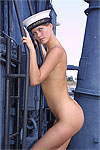
Bell: What's interesting about pinups is that it's a uniquely American phenomenon, at least, inasmuch as those who put pictures of pretty girls on their walls are influenced by the American ideal of realizing one’s dreams. America was the first and only country to openly advocate the philosophy of self-realization and individual accomplishment above self-sacrifice and altruism. The fact that American Air Force pilots painted pretty ladies on their aircraft, while the Japanese kamikaze pilots, who sought only death, did not, proves my point. Female beauty is an inspiration only to men who dream and achieve. We try to recreate this happy and uniquely American sense of life in our galleries on Body in Mind.
EGO: Have you read Ayn Rand's column, Through Your Most Grievous Fault, on Marilyn Monroe?
Bell: Yes. It’s my proof that female beauty is indeed the representation of values. You see I never cared for Marilyn Monroe much until I read Rand's article on the reason she died.
Rand explains that it was precisely for her courage, her beauty, her happiness, her innocence, her sexuality, and her benevolence that she was despised, and eventually killed herself. I had never made that connection before. I'd never connected her to my values, but once I did I started to find her physically attractive. That's the power values in female beauty.
EGO: Please tell us about Leanne's web site – And They Lived Happily Ever After.
Bell: On her site, Leanne makes a lifelong romantic relationship with the person of your dreams possible to everyone, simply by identifying and relating the objective principles on which human romantic love is based. She brings marriage under the umbrella of Reason, and makes it accessible, rational, and successful.
EGO: Have you read Human Relationships in Plain English by Dr. Michael Hurd? Have you listened to Dr. Ellen Kenner's lecture, Preserving & Strengthening Your Romantic Partnership?
Bell: No. Sorry. Should I? [Editor: Yes! :)]
EGO: What are your plans for the future?
Bell: I want to turn And They Lived Happily Ever After into a money-making venture. Leanne helps scores of people every month find solutions to their romantic problems, but she never sees a penny for it! That will change shortly. We are planning some 'beauty videos', which are like music videos, but instead of music they feature female beauty and illustrate the principles behind it. Leanne and I have both written movies we'd like to see made. I am also preparing a website that will allow visitors to participate in some scientific tests of my theories about female beauty. If there's anyone out there interested in any of these projects we'd love to hear from them. But whatever we do, beauty and the furtherance of objective values will be the purpose.
Thanks Martin!
[Editor: If you have enjoyed this interview, please take some time and explore the galleries and the ideas at Body in Mind and Super Beauty.]
